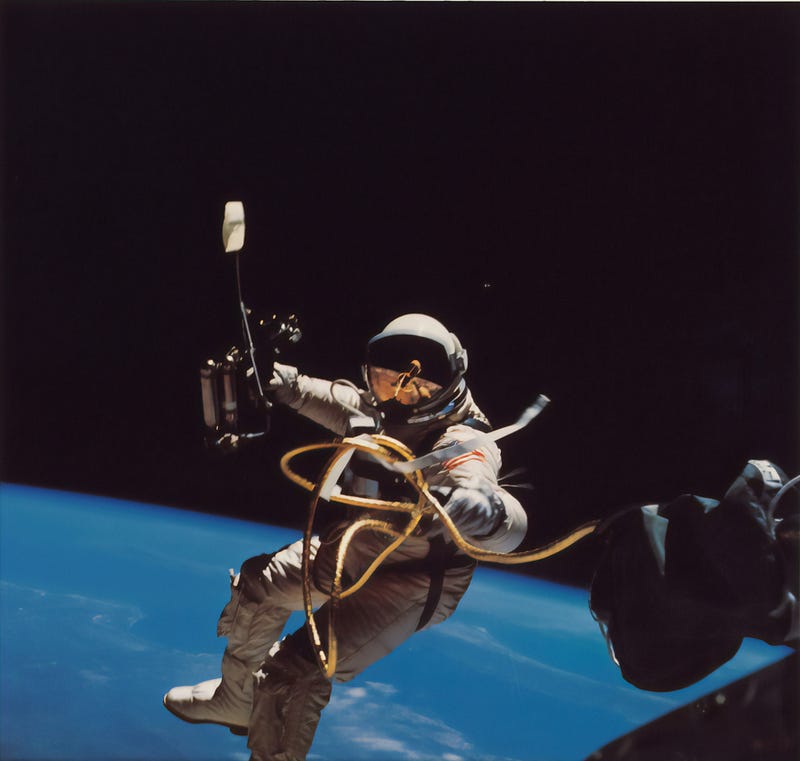Exploring the Mysteries of Spacewalks: A Deep Dive
Written on
Chapter 1: The Concept of Spacewalks
When we think of spacewalks, the term "spacefloat" might be more fitting! At least, that's my perspective.

As I compose this piece, astronauts Matthias Maurer and Raja Chari have just completed a spacewalk outside the International Space Station (ISS). Their mission involved replacing and installing various hardware components on the station's exterior. However, if you tune in to a few minutes of the live stream, you’ll quickly realize that they aren't technically "walking."
Raja Chari spent most of the time tethered to a robotic arm using a foot restraint for movement, while Matthias Maurer relied on handrails to navigate from one area to another. To avoid floating away—a common occurrence in space—they were secured to the station with several tethers.
You might wonder: in the vastness of space, why do things float? The reality is that they are actually in free fall!
The first principle to grasp is that gravity exists everywhere in space. Its intensity varies depending on location. Gravity is a force that draws objects toward its center. For instance, Earth's gravity pulls everything within its vicinity—such as the ISS, the Moon, and various satellites—toward itself. If not countered, everything would eventually plummet to Earth.
So, how do we resist this gravitational pull? The answer lies in speed. The ISS travels around our planet at an impressive 17,500 miles per hour.
Imagine standing on Earth and tossing a ball forward and upward, aiming for maximum distance. The ball's trajectory would curve downward due to gravity, but the faster you throw it, the longer it stays in the air. Similarly, the ISS follows a curved path, but at such high velocity that its trajectory parallels Earth's curvature. This means that the ISS, along with any other object in Earth's orbit, is in a state of continuous free fall around our planet.
I hope this clarifies the concept.
For those particularly intrigued: this process isn't flawless. Earth's gravity still affects objects over time, causing them to gradually descend. Occasionally, astronauts onboard the ISS must activate thrusters to elevate the station and counteract this gravitational pull.
But if everything is in free fall, why is it termed a "walk"? The term "spacewalk" is simply more accessible than the official terminology: EVA, which stands for "extra vehicular activity." This is the designation used by astronauts and ground teams alike.
Interestingly, some people argue that "spacefloat" gives the impression of laziness, and many taxpayers might not appreciate their funds being spent on what sounds like leisurely activities!
Additionally, individuals associated with NASA refer to a "spacesuit" as an EMU, short for "Extra Vehicular Activity Mobility Unit." This title is apt since it encompasses more than just a suit.
One of the most dynamic features of this unit is the SAFER system. While I won’t elaborate on the acronym, it essentially functions as a jet pack equipped with two mini-thrusters that an astronaut can control using a joystick, akin to a video game. However, when this device is needed, the situation is anything but playful. Should the previously mentioned tethers fail, astronauts must promptly activate SAFER to navigate back to the station and secure themselves.
If that fails, the consequences could be dire. Fortunately, no astronaut has been lost in space to date, and I sincerely hope this remains the case.
The first video provides an engaging overview of how to conduct a spacewalk without modifications, demonstrating key techniques and tools.
The second video explores the potential risks astronauts face if they were to float away during a spacewalk, highlighting safety measures and protocols.
Chapter 2: Understanding Microgravity
Astronauts embark on spacewalks to perform vital tasks outside their spacecraft, leveraging their training and equipment to function in microgravity.
This video explains the concept of microgravity and why astronauts experience a state of floating while in space.